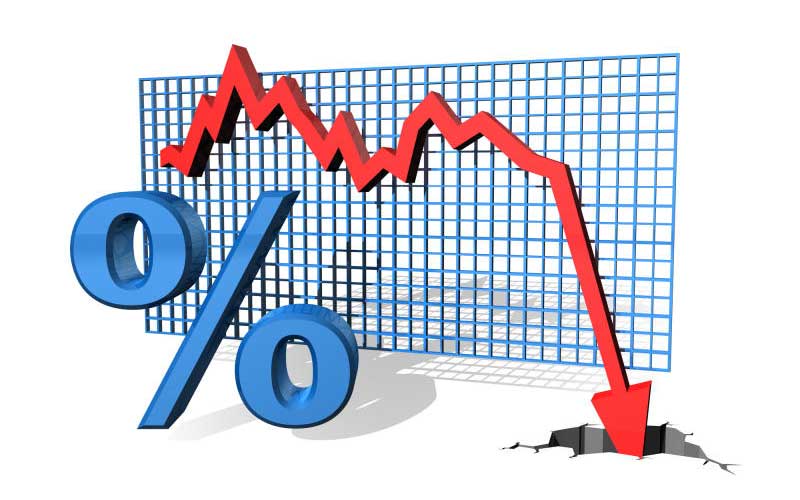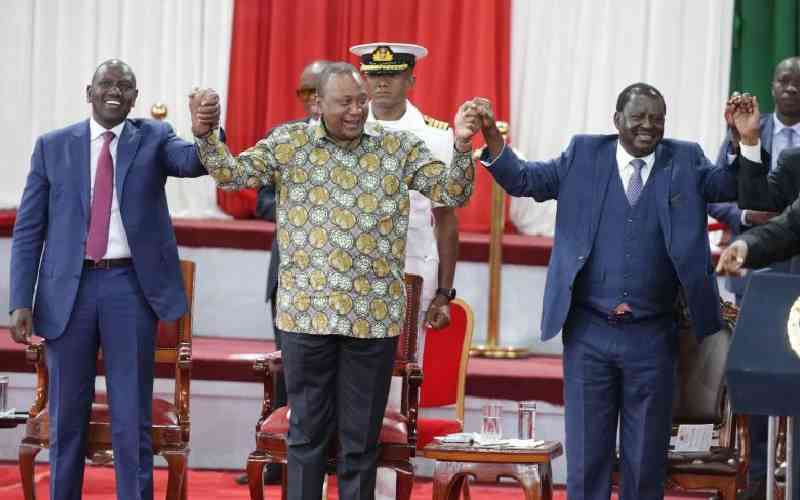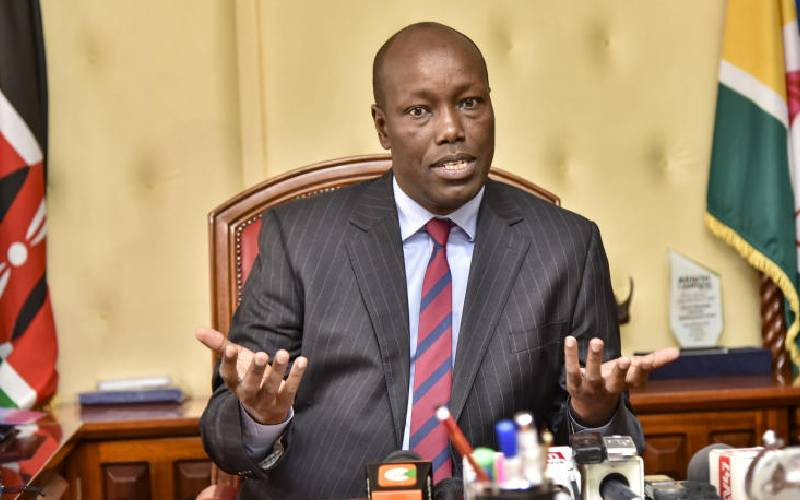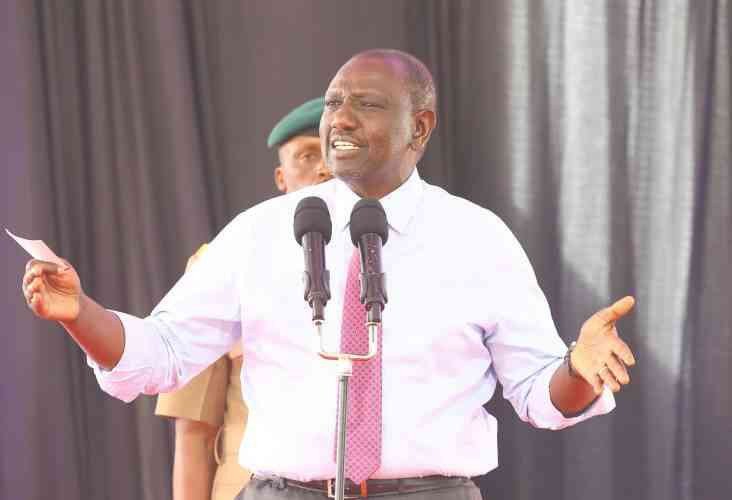
When President Uhuru Kenyatta and his Deputy William Ruto swept to power in 2013, they told Kenyans that they would help the country bake a bigger cake so as to create one million jobs.
To create a million jobs, they cast their eyes on economic growth of between seven per cent and 10 per cent in their first two years in office.
“Our fundamental aim is the attainment of high and sustainable levels of economic development within a stable and secure environment,” read part of the Jubilee party’s manifesto.
Faster economic growth would also reduce the rate of poverty and meet the requirements of Kenya’s growing population.
With 950 days to the end of Mr Kenyatta’s second and final term, double-digit growth remains a pipe dream.
In Jubilee’s eight years in office, the country has yet to manage more than seven per cent growth. When Jubilee came to power in 2013, economic performance in the previous five years had been on an upward trajectory from a 2008 low when it grew by 1.5 per cent.
In 2010, 2011 and 2012, the economy grew annually at 5.8 per cent, 4.4 per cent and 4.5 per cent, respectively. In 2013, it leapt to 6.9 per cent.
Manufacturing, which was a pillar of Jubilee’s ambition to create jobs, has shrunk to less than eight per cent, despite the government giving incentives to expand it to 15 per cent of GDP.
The president, in his manifesto, committed to create at least 6.5 million jobs over five years so Kenyans, particularly the youth, could secure and maintain good jobs and enjoy a decent life. The president has since come up with the Big Four Agenda.
The head of State hopes by the time he leaves office in 2022, the share of manufacturing as a fraction of total national output will have increased to 15 per cent from the current 9.2 per cent.
The Jubilee administration would also like to build half a million affordable homes and provide critical healthcare services to every Kenyan by 2022.
Instead, Kenyans are grappling with reduced circulation of money, punitive taxes and unsustainable fiscal debt, according to Scholastica Odhiambo, a lecturer from Maseno University.
The national and county government have crippled the private sector by failing to pay pending bills, which are estimated to be more than Sh100 billion.
There is also over Sh30 billion owed to manufacturers in tax refunds. Taxes, as a fraction of GDP, have dropped from a high of 24 per cent to less than 15 per cent.
Stay informed. Subscribe to our newsletter
Poor revenue collection has seen the government go on a borrowing spree, with public debt surging to Sh5.8 trillion, or close to 60 per cent of GDP.
Access to power But to Uhuru’s credit, nearly every Kenyan has access to electricity. The country is among the few African countries on course to attain universal access to power by 2022.
However, Dr Odhiambo explains that the cost of living is high and businesses are facing a repressive period.
She thinks that in the remaining days, the president can promote policies that will give consumers and businesses a reprieve, allowing them to thrive.
“This can be done by enabling effective money circulation through payment of debts owed to businesses by the government, and tax relief on household necessities,” said Odhiambo.
The Treasury mandarins, led by acting Cabinet Secretary Ukur Yatani, also think payment of pending bills will go a long way towards rebooting the economy. Asked about his goals for 2020, Mr Yatani said his ministry would seek to “enforce and sustain austerity measures for all public institutions”.
 The Standard Group Plc is a
multi-media organization with investments in media platforms spanning newspaper
print operations, television, radio broadcasting, digital and online services. The
Standard Group is recognized as a leading multi-media house in Kenya with a key
influence in matters of national and international interest.
The Standard Group Plc is a
multi-media organization with investments in media platforms spanning newspaper
print operations, television, radio broadcasting, digital and online services. The
Standard Group is recognized as a leading multi-media house in Kenya with a key
influence in matters of national and international interest.
 The Standard Group Plc is a
multi-media organization with investments in media platforms spanning newspaper
print operations, television, radio broadcasting, digital and online services. The
Standard Group is recognized as a leading multi-media house in Kenya with a key
influence in matters of national and international interest.
The Standard Group Plc is a
multi-media organization with investments in media platforms spanning newspaper
print operations, television, radio broadcasting, digital and online services. The
Standard Group is recognized as a leading multi-media house in Kenya with a key
influence in matters of national and international interest.










